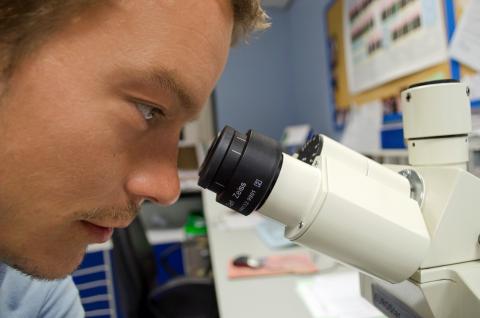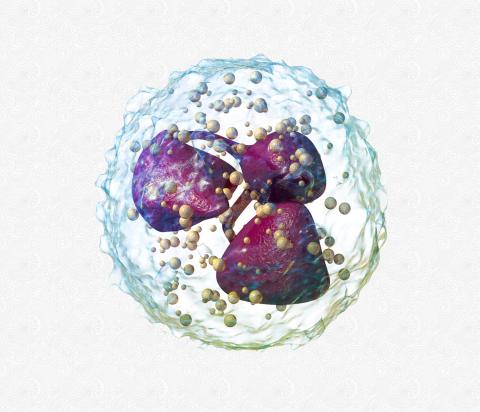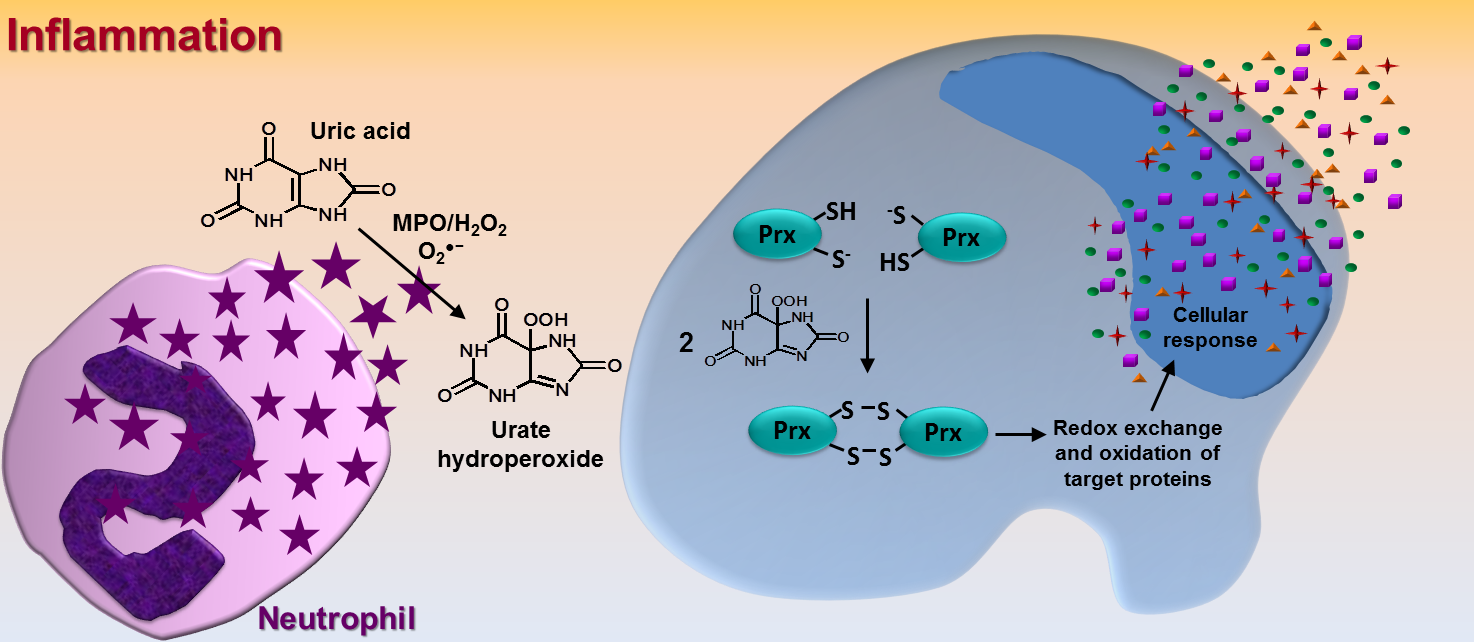Overcoming professional challenges as a young scientist

Main Article by Gustavo G Belchior from Core Us Consultoria e Comunicação Científica
Corresponding author e-mail: gustavo@coreus.com.br
Making a clear career choice at any given time is no easy task for most of us. Just as challenging is knowing if a certain choice will bring us closer to success before the resulting outcomes are tangible. For graduate students, establishing a professional horizon can be especially difficult when trying to decide between the ‘rights’ and ‘wrongs’ of staying in academia or aiming for different horizons.
Academic research is enthralling to many. Being surrounded by an environment where thirst for knowledge is a priority resonates deeply within those who thrive on applying the scientific method to uncover our universe. Feeling useful to society is undoubtedly a big driver Be it in a new field of basic research in materials engineering or the final stages of developing a promising biopharmaceutical, the discovery process gives graduate students meaning as they realize their work and effort can meet world needs. Feeling useful to society is undoubtedly a big driver and a great source of strength against the adversities that coexist. Most of the times, however, building the ‘knowledgeable-to-useful’ bridge is not so obvious and ends up being very demanding and under the influence of several aspects, including the project, the PI, and the research group. Having to deal with exams, report and manuscript deadlines, and coming up with hypotheses and complex experiments to generate plausible conclusions requires a diverse range of specific skills and virtues, including being able to handle the controllable and uncontrollable aspects that permeate research. Notwithstanding, migrating to a position in the private sector or bringing an idea to life as an entrepreneur poses its own obstacles.
The corporate rhythm is dictated by aggressive goals that are often set by the higher managerial levels and cascaded down to company employees. For those companies that filed for an IPO (Initial Public Offering), decisions are thoroughly appraised by investors that help shape the future of the organization. When the need for change is perceived, even the simplest transitions – such as updating a software – may require a considerable amount of energy given the great inertia of the whole corporate body. On the other hand, startups present themselves as fast-paced vehicles that entrepreneurs get to drive. Shifting gears becomes as natural as breathing for founders and their teams, accustomed to a culture more open to failure and that encourages constant pivoting to quickly improve prototypes and MVPs (Minimal Viable Products). When it comes to transforming an idea into a business, a lot of effort goes into structuring the three pillars that investors will keep an eye on: people/team, product/service, and market size. This specific context plays with creativity and intensely explores the possibilities of the unknown, creating a scenario fit for adrenergic explorers.
Information Age must be taken into consideration as well. It is upon us at crushing intensity and resulting in an increased VUCA (Volatile, Uncertain, Complex, Ambiguous) [1] environment, making it even harder for a conscious decision to be made towards the next professional step. As big data predictions indicate over 40 zettabytes (zetta = 1021) of data will be available by 2020 [2], the combination of possibilities to the human mind in terms of building a career is overwhelming. Importantly, struggles with this process do not initiate at the graduate level. Many undergraduate students also face challenges with persisting in their courses in several areas and countries, leading to dropout rates of concerning proportions [3–5]. Nevertheless, young graduated researchers are facing issues in a very particularly setting.
Academia competition is intensifying. Since the late 1980’s, some areas have seen a radical increase in Ph.D. graduation rates contrast with a decrease in the number of tenure-track faculty members [6]. Data from the Survey of Doctorate Recipients conducted by the U.S. National Science Foundation showed a drop of 10 percentage points in the number of Ph.Ds. that held a tenured or tenure-track position comparing 1997 to 2017 (33% vs. 23%) [7]. According to a report from London’s Royal Society, 3.5% of graduates remain in university and only 0.5% will become professors [8,9], an unbalanced proportion that might explain the psychological consequences graduate students are suffering from [10–13]. While more funding for scientific projects and permanent jobs in academia would alleviate this condition in detriment of institutional budget, some suggest data might also lead the way to a solution through record tracking of job positions. This would provide information which could be made available to help candidates get clearer perspectives regarding academic opportunities [14]. holding a M.Sc. or Ph.D. title does guarantee advantages in the corporate world Despite the complexity of academic careers, holding a M.Sc. or Ph.D. title does guarantee advantages in the corporate world in every medium. As ironic as it may seem, in some countries a higher educational degree decrease the chances for hiring. While the average global unemployment rate among masters and doctors revolves around 2%, in Brazil 25% of these professionals are out of a job [15] – which represents more than twice the unemployment rate for those who do not carry these titles. Conversely, the U.S. job market has never hired as many Ph.Ds. in science and engineering7, generating a stimulus for the migration of highly-capacitated individuals.
This apparently unfavorable situation requires identifying a common denominator and a resolution that comes regardless of aspects that are considered disadvantageous. For one, all these factors are exogenous and subjected to individual perception. Therefore, appreciation or devaluation of external conditions will greatly vary among students, as will their individual meaning of success. Etymologically, success derives from the Latin word succedere, which means ‘to succeed’ or ‘come after”. This automatically implies that a predecessor must exist, one that should be established before any professional step is taken but is frequently taken for granted: a purposeful objective.
Without clearly establishing what has meaning in the professional realm, even the brightest, most yielding graduate student will not be able to discern between staying in academia, searching for a job, or starting a business – or any of the many other limitless possibilities. As occupational personas can have multiple interests (e.g., Da Vinci, Thomas Edison), a successful path will derive from what professionals assimilate as their own challenge, a cause they want to fight for, and a need their virtues can meet. Hopefully, there are many tools that can be used to aid early researchers in this process. From journal columns [16] to podcasts [17], several resources are packed with information specifically directed to scientific careers, including an emerging number of articles providing graduates with elements for their decision-making process [18–21]. Interestingly, some established practices from the corporate world, such as mentoring, may be useful for academics [22], as well as coming up with specific career strategies and balancing planning, uncertainty, achievements, and perceived failures [8, 23].
Each graduate student is unique and has a very broad skill set Each graduate student is unique and has a very broad skill set that can be utilized in many different endeavors. After all, the young scientist has potential to become a brilliant prolific PI, an outstanding goal-oriented company manager, or an amazing startup leader who will create the next unicorn. The three Vs of our time (Volume, Velocity and Variety) will nonetheless require M.Sc. and Ph.D. candidates to dominate those external factors and focus on their virtues to make educated, conscious career decisions. Ultimately, since choosing a certain professional path is a very personal and intimate process, ‘rights’ and ‘wrongs’ are relative judgements that do not preponderate over an authentic, purposeful objective that will more likely bring success to those who define it.
Gustavo Belchior (gustavo@coreus.com.br) holds a B.Sc. in Biology (2007) and a Ph.D. in Biochemistry (2014) from the University of São Paulo, with a research period at the Children’s Hospital Los Angeles (Keck School of Medicine, University of Southern California). He served as Regulatory Affairs Specialist at Monsanto (2013-2017), working on petitions for the commercial release of biotechnology-derived crop products. He founded and is the current CEO (since 2017) at Core Us Consultoria e Comunicação Científica, a science consulting company active in the intersection between science, communication, and business. Also in 2017, he created Project Prometheus, designed to increase the chances of professional happiness for pre-university students, undergraduates, and graduate students. Dr. Belchior is the current Financial Director for Pint of Science Brazil, the biggest science festival in the world, responsible for attracting sponsors for the 2019 regional event.
References
- N. Bennet, G. J. Lemoine. What VUCA Really Means for You Harvard Business Review, 1-2: 2014. | url: https://hbr.org/2014/01/what-vuca-really-means-for-you
- M. Sh. Hajirahimova, A. S. Aliyeva. About Big Data Measurement Methodologies and Indicators International Journal of Modern Education and Computer Science, 9(10): 1–9, 2017. | doi: 10.5815/ijmecs.2017.10.01
- U.S. Department of Education. Undergraduate Retention and Graduation Rates The Condition of Education 2018, May (NCES 2018-144): 200-204, 2018. | url: https://nces.ed.gov/pubs2018/2018144.pdf
- European Commission/EACEA/Eurydice. The European Higher Education Area in 2018: Bologna Process Implementation Report Luxembourg, 2018. | url: http://dx.doi.org/10.2797/091435
- Ministério da Educação. Censo da Educação Superior 2017 (Brasília): 2018. | url: http://portal.inep.gov.br/web/guest/sinopses-estatisticas-da-educacao-superior
- N. Ghaffarzadegan, J. Hawley, R. Larson, Y. Xue. A Note on PhD Population Growth in Biomedical Sciences Systems Research and Behavioral Science, 32(3): 402–5, 2014. | doi: 10.1002/sres.2324
- K. Langin. In a first, U.S. private sector employs nearly as many Ph.D.s as schools do Science, 2019. | doi: 10.1126/science.caredit.aax3138
- P. Smaglik. Beating the odds to secure a permanent contract Nature, 562(7725): S49–51, 2018. | doi: 10.1038/d41586-018-06873-5
- The Royal Society. The Scientific Century - securing our future prosperity March: 2010. | url: https://royalsociety.org/topics-policy/publications/2010/scientific-century/
- T. M. Evans, L. Bira, J. B. Gastelum, L. T. Weiss, N. L. Vanderford. Evidence for a mental health crisis in graduate education Nature Biotechnology, 36(3): 282–4, 2018. | doi: 10.1038/nbt.4089
- C. Woolston. Graduate survey: A love–hurt relationship Nature, 550(7677): 549–52, 2017. | doi: 10.1038/nj7677-549a
- K. Furnell. Breaking the silence around mental health Science, 2018. | doi: 10.1126/science.caredit.aav5324
- F. Aguisanda. Grad school depression almost took me to the end of the road—but I found a new start Science, 2018. | doi: 10.1126/science.caredit.aaw2136
- Nature, 559(7714): 302, 2018. | doi: 10.1038/d41586-018-05745-2
- B. Roscoe, I. Soares. Desemprego entre mestres e doutores no Brasil Correio Braziliense, 10/03/2019 [online]: 2018. | url: https://www.correiobraziliense.com.br/app/noticia/brasil/2019/03/10/interna-brasil,741968/desemprego-entre-mestres-e-doutores-no-brasil-chega-a-25.shtml
- A. Levine. Allow me to tell you how awesome you are Science, 2019. | doi: 10.1126/science.caredit.aax1181
- J. Hedge. Working Scientist podcast: Learn to code to boost your research career Nature Careers Podcast, 11 APRIL [online]: 2019. | url: https://www.nature.com/articles/d41586-019-01187-6
- J. Mervis. How much do graduate students benefit from studying abroad? Science, 2019. | doi: 10.1126/science.aaw5871
- C. Harrison. To find the right career fit, I needed to do more than move from job to job Science, 2019. | doi: 10.1126/science.caredit.aax4076
- K. Langin. How mindfulness can help Ph.D. students deal with mental health challenges Science, 2019. | doi: 10.1126/science.caredit.aax4909
- K. Bodewits. You’ve accomplished more than you think Science, 2019. | doi: 10.1126/science.caredit.aax5688
- C. Woolston. Postdoctoral mentorship key to career success Nature, 565(7741): 667, 2019. | doi: 10.1038/d41586-019-00262-2
- C. Romeo Upperman. From academia to industry: seven tips for scientists making the leap Nature, 2019. | doi: 10.1038/d41586-019-00692-y


Add new comment